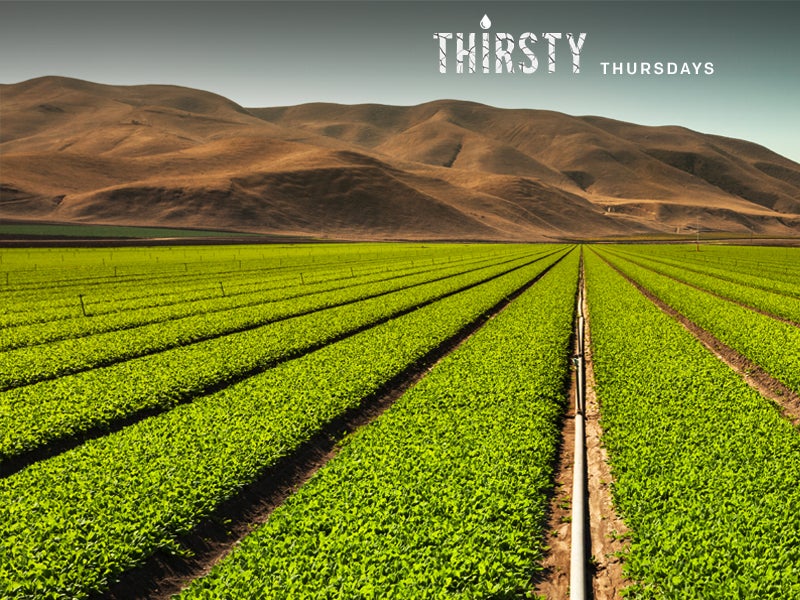It’s Time to Be Drought Intolerant
Want to help the drought? Draw a bath, call your senator, and let your worries soak away.

This page was published 10 years ago. Find the latest on Earthjustice’s work.
California is in a drought fever. Judging by the plethora of billboards, store ads and news articles popping up lately, the only way to break this fever is for average Californians to make sacrifices. The messages all suggest replacing grassy lawns with low-water plants, taking shorter showers and shunning the water-guzzling almond.
These efforts are noble, and they do get people to think about water as a valuable resource that shouldn’t be squandered. (The Bay Area, especially, is getting into the drought-tolerant plant craze, as reported recently in this Earthjustice blog.)
But with every shower skipped by a Californian, the agricultural industry breathes a huge sigh of relief. That’s because these “Little Things Californians Are Doing To Conserve During the Drought,” as one HuffPo article recently stated, are just that—little things. Meanwhile, California agriculture uses about 80 percent of the state’s developed water supply, so little fixes meted out by individuals are mere drops in the bucket when it comes to alleviating the drought-stricken state.
Worse, when Californians like me spend all of our extra energy engaging in heated debates with our housemates about whether to flush the toilet or “let it mellow,” the opportunity to significantly affect our state’s fate goes down the drain.
So how does one individual solve the drought? It’s a bit of a trick question because one phone call or letter written about this issue feels as useful as planting that pretty succulent in your garden. But what if we all wrote letters or called our representatives to demand real, long-term drought solutions? Collective action like that is the heart of democracy, and though it’s not as enticing as a plant shopping spree, it forces our representatives to think beyond quick fixes and seriously reconsider how we allocate water.
For starters, we need to stop irrigating certain areas of the southern San Joaquin Valley. Farmers there have abandoned their fields because decades of irrigation have brought to the surface chemicals like selenium and arsenic, making the soil toxic. Yet Gov. Brown recently proposed building two giant water tunnels beneath the Sacramento-San Joaquin delta that will “deepen the ecological mess” by guaranteeing more water from northern California is poured on the toxic land. (Read more about why the tunnels are a bad idea.)
We also need to stop growing water-intensive crops in arid landscapes, period. Water is a scarce resource in California, and it should be allocated as such. Almonds have been sliced and diced repeatedly by the media lately for their water-intensive ways. But depleting the state’s desert aquifers to grow hay and corn to fatten cows also makes little sense, especially when you can raise cows in plenty of non-arid places, as this Slate article points out.
Of course, California’s Big Ag industry hates these solutions because it impacts their bottom line. That’s probably why Gov. Brown shifted the focus off the industry and towards individual Californians. His administration has created billboard slogans like “Let it go” or “Turn it off,” urging taxpayers to let their lawns fade to gold.
The good news is that this water-saving campaign is working: residential water use dropped by 29 percent in May. Individuals have answered the call to make sacrifices when it comes to water; now it’s time for the agricultural industry to do the same.
About this series
Thirsty Thursdays is a weekly blog series exploring the historic drought in the western United States. In the ongoing series, we’ll share expert opinions, breaking news, compelling articles and the work Earthjustice is doing to protect water resources in a time of extreme water scarcity.
Don’t miss last week’s post: “Who Gets the Water and Who Gets Hung Out to Dry?”